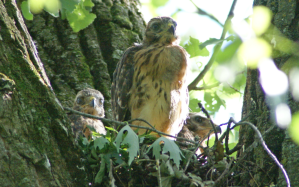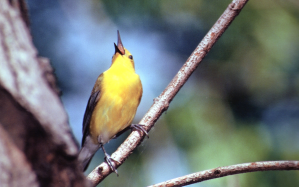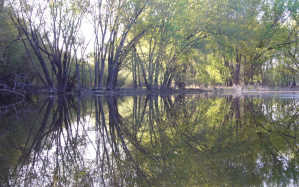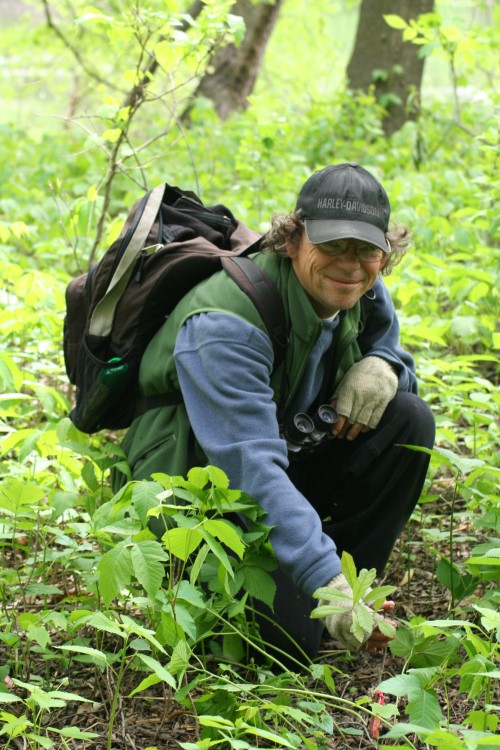CONTROL PESTICIDES, NOT PELICANS
Richie Swanson
I disagree with citizens who may want to control the population of American white pelicans who breed on Pool 13 of the upper Mississippi River, just north of Clinton. The website pelicanpetition.com expresses the group’s fears: that pelicans decrease fish populations, and their excrement threatens trees, soil and islands. The Dubuque Herald Telegraph quoted a citizen at a meeting on the topic in August: “Adding a hunting season will take care of things quickly.”
White pelicans breed on less than ten acres of islands and shoreline in Pool 13, amid more than 240,000 acres of the Upper Mississippi River National Wildlife & Fish Refuge. The Pool 13 breeding location is the first documented in Iowa since 1905, the only known colony currently in Iowa or on the Upper Miss. The species’ population reached lows in North America in the mid-twentieth century, due to human disturbance at nesting sites (usually on the ground on isolated islands) and destruction of foraging and breeding habitats. But now, somehow, the boat-busy and high-flooding Mississippi provides white pelicans a place to raise young.
They first bred in Pool 13 in 2007, and Stephen J. Dinsmore of Iowa State University has monitored colonies for 13 years, tallying adults present at nesting sites during breeding season. Counts fluctuate year-to-year: 900 in 2010, 200 in 2015, and 2200 in 2023. Meanwhile counts of largemouth bass and northern pike, prized game fish, appear stable in Pool 13 from 1993 to 2019, according to 2022 USGS report Ecological Status and Trends of the Upper Mississippi and Illinois River. Yellow perch have increased, according to the Long Term Research Monitoring program on the river. Pool 13 also appears to host a high diversity of fish species, and the native fish community in the Upper Miss in general also remains intact, regardless of the pelican’s increase on the river.
Pelicanpetition.com advocates for an expensive impact assessment, but fish and pelican counts will continue without it–and the Upper Miss has larger issues to research. I’ve birded the river from Winona, Minnesota 40+ years and have witnessed the real losses reported in the journal Science in 2019, Decline of North American Avifauna. The authors estimate populations have declined by nearly three billion birds since 1970, or about 29% of their abundance just five decades ago.
I moved to the Mississippi River Flyway in 1981, awed by great concentrations of birds on the river during summer twilights and sunrises. Black terns dive-bombed for minnows, and uncountable nighthawks, swallows, swifts and bats swooped for insects. Nighthawks bred on rooftops in many river towns, swarming streetlights to catch bugs. Now Winona’s skies are virtually empty on summer mornings and evenings.
Migratory birds have fueled their journeys and young on the river for millennia, feeding on insects that appear with the leaves in spring and summer. When I conducted breeding bird censuses in a bottomland forest in the 1990s, I thought of the feeding frenzy as the great worm feast, marveling at how rapidly and acrobatically chickadees, warblers, orioles and other insectivores snatched caterpillars from foliage. But now scientists claim insectivores suffer the continent’s largest population declines and link the losses to insect declines.
Neonicotinoids that diminish insects are applied to crops throughout the Upper Miss’s watershed. Don’t blame the American farmer. Though Europe generally bans outdoor use of neonics, our EPA doesn’t, even though neonics leach into soil and drain readily and persist in lakes, marshes, rivers, aquifers. Birds can die outright when they eat seeds coated by neonics, and scientists suspect that neonics prevent and diminish the emergence of mayflies, butterfly larvae, moths and other insects, and so rob birds of food for their young.
Neonics and other pesticides may also threaten the river’s fish. Though scientists still investigate the possibility, the pesticides might kill and impair burrowing mayflies—whose nymphs “convert organic detritus into high-quality food for fish,” says Calvin R. Fremling in Immortal River. A 2020 study in a National Academy of Sciences journal reports a 52% decline of burrowing mayflies on the Upper Miss, 2012-2019, and describes the mayflies as “vital for supporting the commercial fishing industry and recreational anglers.”
Fishermen should allow the pelicans a refuge on the refuge system, let the greater public enjoy their success. If pelicanpetition.com worries about erosion and tree mortality, it can work with other conservationists to address prolonged flooding, sedimentation, the Emerald ash borer, buckthorn and canary grass, which curtail trees all along the upper river, not just in the pelican’s tiny breeding area. If research addresses fish populations, it can prioritize mitigating climate change that warms water and triggers algal blooms that decrease essential fish food, and look into the reduction of massive pollution that may disrupt food webs along the entire Upper Miss.










